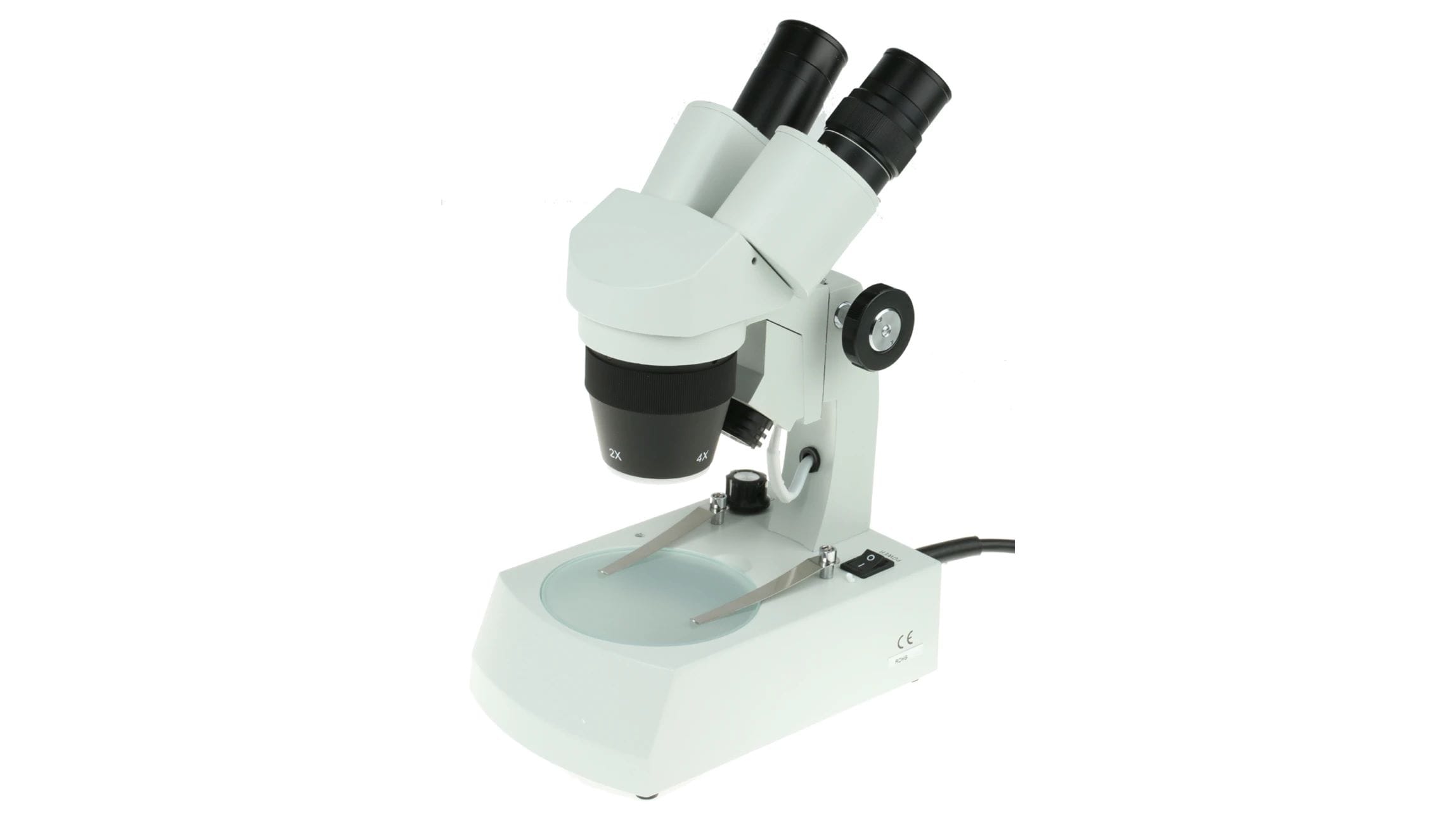Get ready to jump into the incredible world of microscopy! Microscopes are like super-powered glasses that let us see things we couldn’t even imagine with our own eyes. From their first use centuries ago to the latest gadgets that are changing science today, it’s a journey through time and technology. So, buckle up, because we’re about to explore the invisible realm, where microscopes rule!
Fun Facts About Microscopes
Zooming In Doesn’t Always Mean Seeing More Clearly
You might think that a microscope with super-duper magnification would always give you the best view, right? Well, not quite! While a stronger magnification does make things appear bigger, there’s another factor at play called resolution. Think of it like this: you can zoom in on a blurry photo, but it won’t suddenly become clear. Resolution is the microscope’s ability to pick out those tiny details and show them distinctly. It’s like having a sharper lens on a camera.
From Tiny Critters to the Building Blocks of Matter
The very first microscopes were pretty basic, but they allowed scientists to peer into a world of miniature wonders – things like fleas, which were previously too small to study in detail. Fast forward to today, and we’ve got electron microscopes that are like something out of science fiction! These incredible machines can magnify objects millions of times, revealing the very atoms that make up everything around us. It’s like having a window into the fundamental building blocks of the universe.
Microscopes Beyond Earth
You might picture microscopes in labs, but did you know they’ve even ventured into space? That’s right, scientists have sent these powerful tools on spacecraft to investigate microorganisms floating around out there and to examine samples brought back from other planets and celestial bodies. It’s all part of the quest to understand if there’s life beyond Earth and what it might look like.
Cracking Cases with a Microscopic Eye
Microscopes are like something out of a detective show! Forensic scientists use them to uncover hidden clues that help solve crimes. Tiny fingerprints invisible to the naked eye can be revealed, fibers from clothing can be analyzed, and even the time of death can be estimated using microscopic techniques. It’s amazing how the tiniest pieces of evidence can tell a big story.
Art Detectives and Microscopic Masterpieces
Art conservators have a very important job: preserving precious works of art for future generations. And guess what? Microscopes are some of their most valuable tools. By examining paintings and sculptures under high magnification, these experts can spot hidden details, understand the artist’s techniques, and even assess the condition of the artwork to guide its restoration. It’s like being an art detective and a microscopic surgeon all rolled into one!
Microscopes: Not Just for Scientists Anymore
Think microscopes are only found in labs? Think again! These versatile tools play a vital role in keeping our food safe by detecting harmful microorganisms that might be lurking unseen. They also give us a glimpse into the past by helping us analyze ancient artifacts – think pottery shards, tools, or even ancient textiles. It’s like traveling back in time without even leaving the lab!
The AI Revolution in Microscopy
Artificial intelligence (AI) is changing the world as we know it, and the field of microscopy is no exception. Scientists are now developing AI algorithms that can analyze microscopic images with incredible speed and accuracy. This is a game-changer because it automates tedious tasks and allows researchers to extract even more information from their data. Think of it like having a super-powered assistant that can spot patterns and make connections that humans might miss. It’s an exciting time to be exploring the microscopic world!
What is an Interesting Fact About a Microscope?
Key Takeaways:
- Microscopes provide a magnified view of small objects, allowing us to see details that are otherwise invisible to the naked eye.
- Microscopes have been around for centuries and have played a vital role in numerous scientific discoveries.
- Precision microscopes provide exceptional accuracy in magnifying and measuring objects.
- Different types of microscopes, including optical, electron, and scanning probe microscopes, cater to specific applications.
- Microscopes have revolutionized our understanding of the microscopic world and continue to be essential tools in various fields.
Microscopes have been around for ages – well, at least for a few centuries! It might be surprising to learn that the very first microscope wasn’t some high-tech gadget. Back in the 1600s, a Dutch guy named Antonie van Leeuwenhoek crafted a simple microscope that, while rudimentary, was powerful enough to reveal something completely unknown at the time–microorganisms! Imagine seeing those little critters for the very first time–talk about a game-changer!
Since those early days, microscopes have evolved dramatically. Today, we have a whole spectrum of microscopes, each with its own specialty. But they all share that amazing ability to unveil a hidden world invisible to our naked eyes.
Think about it – when you peer through a microscope, it’s like entering a whole new dimension. You’re suddenly privy to intricate details, complex structures, and miniature marvels that we’d otherwise never even know existed! It’s like getting a backstage pass to the building blocks of life itself.
The impact of microscopes on our understanding of the world has been nothing short of revolutionary. They’ve helped us unravel the mysteries of cells, explore the behavior of atoms, and diagnose and treat diseases with a precision unimaginable centuries ago. Microscopes are like the superheroes of the science world, working tirelessly in labs, hospitals, and manufacturing plants to push the boundaries of knowledge and improve our lives.
But the story of the microscope is far from over. Scientists are constantly finding new ways to make microscopes even more powerful, allowing us to see things in even greater detail. It’s exciting to think about what future microscopes might reveal – what hidden wonders are still waiting to be discovered?
How Old is the Oldest Microscope?
We already know that the first simple microscopes popped up in the late 1500s, even before telescopes were invented. It’s fascinating to think about, right? Back then, in 1590, two Dutch eyeglass makers, Zacharias Janssen and his dad, Hans, put together the first real compound microscope. Picture this: two lenses, one curved outward (that’s the convex objective lens) and one curved inward (the concave eyepiece lens), all snug inside a tube. They found that when you put something close to the objective lens, it makes a bigger image, and then the eyepiece lens makes it even bigger! Pretty clever, huh? But those early microscopes weren’t super powerful, and the images weren’t crystal clear.
So, you’re probably wondering, what about the oldest microscope? Well, the oldest one we still have today is that very same Janssen microscope, made around 1590. It’s a simple compound microscope, just like they first described, with two lenses in a brass tube. Today, it’s carefully preserved in a museum called the Museum Boerhaave in Leiden, Netherlands.
This microscope was a total game-changer. It was like opening a window into a whole new universe that we never even knew existed – the microscopic world. Can you imagine the excitement of scientists back then, seeing tiny things for the very first time? This discovery led to huge leaps forward in all sorts of fields – biology, medicine, you name it!
Think about it:
- The first microscopes were around in the late 16th century.
- The oldest one we have left – the Janssen microscope – is from about 1590.
- You can find it at the Museum Boerhaave in Leiden, Netherlands.
- The Janssen microscope totally changed the game for science, letting scientists explore the microscopic world in a way they never could before.
While the Janssen microscope is widely accepted as the oldest surviving example, ongoing research continues to explore the history of early microscopy. Some experts suggest that even earlier magnifying devices may have existed, though concrete evidence remains elusive. The development of the microscope is a testament to human ingenuity and our constant drive to explore the world around us, from the grandest galaxies to the tiniest cells.
What are 3 Things Microscopes Do?
We navigate a world easily visible to our eyes, but there’s a universe of the unseen teeming all around us. So, what exactly do microscopes do to pull back the curtain on this hidden world?
- Magnify: Imagine looking at a tiny insect. You might see its legs and wings, but with a microscope, those features become magnified, revealing intricate details like tiny hairs or patterns on the wings you never knew existed. It’s like hitting the zoom button on our vision, letting us experience the world on a whole new scale.
- Resolve: Now, imagine trying to look at something incredibly small, like the edge of a razor blade. To our eyes, it might seem smooth, but a microscope’s ability to resolve comes into play here. It keeps those close-together details from blurring into one, allowing us to see the individual serrations or imperfections on that seemingly smooth edge.
- Image: This is where things get really interesting. Microscopes don’t just magnify and resolve; they create images of these magnified, detailed objects. Think of it like taking a picture of the microscopic world. We can then study these images to understand the structure of a cell, the intricate details of a crystal, or even the behavior of tiny organisms.
Key Takeaways:
- Microscopes have been instrumental in revealing a hidden world, changing our understanding of biology, medicine, and countless other fields.
- They’ve opened our eyes to the existence of cells, microorganisms, and even the building blocks of matter itself.
- The ability to explore this microscopic world has revolutionized scientific research, medical diagnostics, and even forensic investigations.
What are 10 Uses of a Microscope?
So, we’ve talked about how cool microscopes are–they’re like these magical lenses that reveal a whole hidden world, right? But they’re not just for scientists in white coats! Microscopes have tons of uses in all sorts of fields, from medicine to art history, even to checking out your lunch for any unwanted surprises. Let’s dive into ten ways these amazing tools are used every day.
1. Getting Up Close and Personal with Cells and Tiny Life
Microscopes are the MVPs of biology. They let scientists peek inside cells, those tiny building blocks of life, to understand how they work, grow, and divide. Think of it like exploring a bustling city, but on a microscopic scale! Researchers can observe how cells react to medicines, track down the causes of diseases, and even study the intricate details of DNA, the blueprint of life.
2. Playing Detective with Microorganisms
Bacteria, viruses, fungi – these microscopic critters are everywhere! A microscope helps us identify these tiny organisms, good or bad. This is super important for diagnosing infections, ensuring our food and water are safe, and even developing new medicines. Imagine a microscope as a detective’s magnifying glass, helping to solve mysteries in the tiny world around us.
3. Inspecting Materials for Flaws
Microscopes aren’t just for living things; they’re great for checking out non-living stuff too! In industries like manufacturing, materials science, and electronics, microscopes are used to examine materials for tiny cracks, imperfections, or impurities that could cause problems down the line. This is crucial for ensuring the quality and safety of everything from airplanes to microchips – we wouldn’t want our phones glitching out because of a microscopic flaw, right?
4. Cracking the Case with Forensics
Think CSI, but with microscopes! Forensic scientists use these powerful tools to analyze evidence like hair, fibers, and paint chips collected from crime scenes. By zooming in on these tiny details, they can connect suspects to crime scenes or even uncover clues about how a crime unfolded. Talk about seeing the unseen!
5. Keeping our Food Safe (and Delicious!)
Ever wondered what’s really lurking in your food? Probably best not to dwell on it too much, but food scientists use microscopes to ensure our food is safe from harmful bacteria, fungi, and other contaminants. They also use microscopes to study food structure and improve texture and flavor. So next time you enjoy a perfectly smooth ice cream or a crispy chip, thank a microscope!
6. Uncovering the Secrets of Art and Antiques
Microscopes can be like time machines for art historians! By examining paintings, sculptures, and ancient artifacts under a microscope, experts can authenticate their origins, identify the materials used, and even uncover hidden details or previous restoration attempts. Talk about bringing history to life!
7. Building the Future with Nanotechnology
Want to build robots smaller than a hair? That’s where nanotechnology comes in! Microscopes are essential tools in this field, allowing scientists to manipulate materials at the atomic and molecular level. This paves the way for groundbreaking advancements in medicine, electronics, and energy. We’re talking about a future with tiny robots delivering medicine directly to our cells–how cool is that?
8. Exploring the Wonders of the Natural World
Microscopes aren’t just for labs and factories; they’re perfect for satisfying our curiosity about the natural world. From the intricate patterns on a butterfly’s wing to the hidden world teeming within a drop of pond water, microscopes reveal a universe of wonder that’s invisible to the naked eye. It’s like having a portal to a secret world right at your fingertips!
9. Microscopic Entertainment
Believe it or not, microscopes can be fun! Microphotography, where artists capture stunning images of the microscopic world, has become increasingly popular. These images often resemble abstract art and can be found in museums, galleries, and even on your Instagram feed! They remind us of the beauty and complexity hidden within even the smallest things.
10. Inspiring the Next Generation of Scientists
Remember that feeling of awe when you first looked through a microscope in school? Microscopes are fantastic educational tools, sparking curiosity and wonder in students of all ages. By allowing students to explore the unseen world hands-on, microscopes ignite a passion for science and discovery that can last a lifetime.
So, there you have it–ten ways microscopes impact our lives. From fighting diseases to creating art, these incredible tools are helping us understand and shape the world around us, one tiny detail at a time. Who knows what other amazing discoveries await as technology continues to advance? The future of microscopy is bright, and the possibilities are, dare I say, infinitely small!
Why is it Called a Microscope?
We’ve already talked about how cool microscopes are, but have you ever wondered where they got their name? It’s actually pretty straightforward! The word “microscope” is a mix of two ancient Greek words: “mikros” and “skopeo.” “Mikros” means “small,” and “skopeo” means “to look at.” So basically, a microscope is a “small looker,” which is a pretty accurate description, don’t you think?
Think about it – we use microscopes to examine things that are way too tiny to see with just our eyes. It’s like having super-powered vision!
Who came up with the word “microscope”?
Well, we can thank a clever Italian scientist named Giovanni Faber for that. Back in 1625, he decided to give this amazing invention a catchy name, and “microscope” stuck! Interestingly, the word was inspired by another famous scientist, Galileo Galilei, who had his very own microscope.
What is a Fun Fact About Electron Microscopes?
So, we’ve talked about how electron microscopes use electrons instead of light to see things, right? That might sound kind of strange at first, but it’s what lets them do something super cool: zoom in way, way closer than regular microscopes ever could. Think of it like this – a light microscope is like a magnifying glass, while an electron microscope is more like a super-powered zoom lens on a camera, revealing tiny details you never even knew existed!
This incredible ability to magnify things thousands of times larger makes electron microscopes totally essential for scientists who want to study the really, really small stuff. I’m talking about the ultrastructure of cells – the teeny tiny structures inside that are too small for even a really good light microscope to see clearly. It’s like being able to look inside the individual rooms of a house instead of just seeing the house from the outside.
Scientists can use electron microscopes to study all sorts of things that are important for understanding how life works, like:
- How viruses infect cells: Electron microscopes let us see the shapes of viruses and how they interact with cells, which helps us understand how to fight off infections.
- The structure of DNA: These powerful microscopes allow us to see the double helix structure of DNA, the molecule that carries our genetic information.
- The details of bacteria: By magnifying bacteria, researchers can learn about their structures and how they function, leading to the development of new antibiotics.
It’s mind-blowing to think that we can see things so small! And the best part is, scientists are constantly improving electron microscopes, so who knows what incredible things we’ll be able to see in the future!
What is Some Information About Microscopes?
We’ve already talked about how cool microscopes are, but let’s dive a little deeper into this world of seeing the unseen! Imagine being able to see things so small they’re invisible to the naked eye. That’s exactly what a microscope allows us to do. It’s like having a superpower!
Now, not all microscopes are created equal. It’s kind of like comparing a bicycle to a spaceship–both can get you from point A to point B, but in vastly different ways.
- Optical microscopes are like the trusty bicycles of the microscope world. They use light, which we see all around us, to magnify objects. They’re commonly found in schools and labs.
- Electron microscopes are like those high-tech spaceships. They use a beam of electrons–these are even smaller than atoms! – to create an image. They can magnify things way more than optical microscopes, but they’re also a lot more complex.
- Scanning probe microscopes are like the Mars rovers of the microscope world. They use a teeny, tiny probe to “feel” the surface of an object and create a 3D image.
Think about the first time someone ever looked through a microscope and saw a whole bunch of tiny, living things swimming around in a drop of water. They probably couldn’t believe their eyes! That first glimpse was all thanks to the invention of the microscope back in the 16th century.
Since then, scientists have been working non-stop to make microscopes even better. They’re like those phone companies always coming out with a new model. And just like those phones have changed how we communicate, microscopes have completely changed how we understand the world around us.
Today, microscopes are like essential tools in a scientist’s toolbox. They’re used to study everything from the tiniest cells in our bodies to the vast galaxies in outer space. Pretty mind-blowing, right?
Here’s a table to help you remember:
| Type of Microscope | What it uses to magnify | Example Use Case |
|---|---|---|
| Optical Microscope | Light | Looking at cells in a biology class |
| Electron Microscope | Beam of electrons | Studying viruses in a research lab |
| Scanning Probe Microscope | Tiny probe | Examining the surface of a material |
We’ve come a long way since those first clunky microscopes, and who knows what amazing things we’ll be able to see in the future! It’s a journey of discovery that never really ends.
What is the Greatest Microscope?
Picking the “best” microscope is like trying to pick the best car–it really depends on what you need it for! There isn’t a single microscope out there that’s the absolute best for everything.
Think of it this way: you wouldn’t use a sports car to haul furniture, just like you wouldn’t use a basic microscope to look at individual atoms! The type of microscope that’s going to rock your world depends on what you’re trying to see and how much detail you need.
It’s All About the Right Tool for the Job
Let’s break down some key factors that come into play when choosing the right microscope:
| Factor | Description |
|---|---|
| Size | How big (or tiny!) is the thing you’re looking at? |
| Shape | Is it flat, bumpy, or does it have a complex 3D structure? |
| Opacity | Can light pass through it, or is it solid and opaque? |
| Magnification | How much closer (and bigger) do you need the image to be? |
| Resolution | How much detail do you need to see? This is about image sharpness. |
Exploring the Microscopic Universe: Different Microscopes, Different Strengths
Over the centuries, brilliant minds have developed an incredible array of microscopes, each with its own strengths and weaknesses. Here’s a glimpse into the amazing world of microscopy:
- Optical Microscopes: These are the workhorses of the microscope world – reliable, relatively affordable, and easy to use. They use visible light to magnify objects, and you can find them in classrooms, labs, and even some homes! They’re great for observing cells, tissues, and microorganisms, offering magnifications up to 1,000 times the original size.
- Electron Microscopes: Now we’re stepping into the big leagues! Electron microscopes use a beam of electrons instead of light. This allows them to achieve mind-blowing magnifications, far exceeding what’s possible with optical microscopes. However, this power comes at a cost – they’re much more expensive, complex to operate, and require special sample preparation. There are two main types:
- Transmission Electron Microscopes (TEMs): These are like the X-ray machines of the microscopic world, allowing us to see through thin specimens to reveal their internal structure.
- Scanning Electron Microscopes (SEMs): SEMs, on the other hand, scan the surface of a sample with an electron beam, creating incredibly detailed 3D images.
- Scanning Probe Microscopes: These cutting-edge instruments use a super-sharp probe to trace the surface of a sample, a bit like a tiny record player needle. This allows us to “feel” the surface at an atomic level, providing even more information about its structure and properties. They’re particularly useful in fields like nanotechnology and materials science.
The Quest for Knowledge Continues
The world of microscopy is constantly evolving. Researchers are pushing the limits of magnification and resolution, developing new techniques to visualize the microscopic world in ever greater detail. Some areas of ongoing research include:
- Super-resolution microscopy: This exciting field is breaking the traditional limits of resolution, allowing us to see details previously thought impossible to observe with light microscopy.
- Cryo-electron microscopy: This technique has revolutionized structural biology by allowing scientists to determine the 3D shapes of molecules with incredible precision.
So, while we can’t crown a single “greatest microscope,” it’s clear that these incredible instruments have opened up a universe of knowledge and continue to shape our understanding of the world around us!
What are Some Facts About Cells and Microscopes?
We’ve already talked about how cool cells are, those tiny building blocks of life. But how did we even discover something so small? That’s where microscopes come in, acting like super-powered magnifying glasses to reveal a hidden world.
Think back to the late 1500s. Microscopes were just starting to pop up in Europe, and they were a pretty big deal. Imagine finally being able to see things that were way too small for the naked eye! These early microscopes, called compound microscopes, were like the first step into a whole new universe of science.
These microscopes allowed scientists to discover that living things, both plants and animals, are made up of these tiny compartments called cells. It was a revolutionary idea! Before microscopes, we had no clue what made living things tick at such a tiny level.
But hold on, it gets even cooler. Inside these already minuscule cells are even tinier parts called organelles. These little guys are like the organs of a cell, each with its own important job. Some organelles help make energy for the cell, while others store important information. Without microscopes, we’d probably still be clueless about these intricate workings.
And guess what? There isn’t just one type of microscope. It’s like having a whole toolbox of different “zoomers,” each perfect for a specific job.
- Optical microscopes, the most common kind, use beams of light to magnify things. They’re great for getting a closer look at cells and even some of the bigger organelles.
- Then there are electron microscopes, the real heavy lifters. Instead of light, they use beams of electrons, which are teeny tiny particles. This lets scientists peek at the super small stuff, like the detailed structure of organelles and even molecules.
- And don’t forget about scanning probe microscopes! These use a super-sharp probe, kind of like a record player needle, to trace the surface of a sample. It’s like reading Braille but on a microscopic level! This helps scientists map out the surface of materials and understand how they interact at the atomic level.
The invention of the microscope was like opening a door to a whole new world of discovery. Scientists were able to see bacteria for the first time, those microscopic critters that can be both helpful and harmful. Then came the discovery of viruses, even smaller than bacteria and responsible for so many diseases. And who could forget the iconic double helix structure of DNA, the very blueprint of life? All of these groundbreaking discoveries were made possible thanks to the power of microscopes.
But the story doesn’t end there. Microscopes are still hard at work today, helping scientists in countless fields. Biologists use them to study how cells function and interact. Doctors diagnose diseases and develop new treatments using powerful microscopes. Even engineers use them to examine materials in incredible detail, leading to stronger buildings and faster computers.
So next time you think about it, remember that the world is full of hidden wonders, invisible to the naked eye. And without amazing inventions like the microscope, we’d still be in the dark about the incredible, complex universe that exists right under our noses.
What is a Fact About Compound Microscopes?
So, we’ve been talking about microscopes, these really cool tools that let us peek into a world we can’t see with just our eyes. Now, compound microscopes? They’re like the superheroes of the microscope world! They use not one, but two lenses to magnify things. It’s like having a double zoom on your camera! This allows us to see things hundreds of times smaller than a strand of hair, like, really up close and personal.
Think about it this way, they’re like those magnifying glasses you see in detective movies, but way more powerful. They’ve been around for centuries, helping scientists make groundbreaking discoveries. Remember bacteria? Yeah, those tiny little things that can make you sick? We wouldn’t even know they existed without compound microscopes!
And the best part? They’re not just a thing of the past. Scientists and researchers still use them today to study all sorts of things, from cells to crystals. They’re even used in schools so students can experience the magic of the microscopic world firsthand. It’s pretty mind-blowing when you think about it!
Here are some of the most fascinating and fun facts about hydroelectricity did you know that the world’s largest hydroelectric dam is the Three Gorges Dam in China? It has a capacity of 22,500 megawatts, which is enough to power the entire country of Switzerland!
Do you want to know more about Lyme disease? It is spread by ticks that are found in wooded areas across the United States. Lyme disease can cause a variety of symptoms, including fever, chills, headache, fatigue, and a bull’s-eye rash.
















